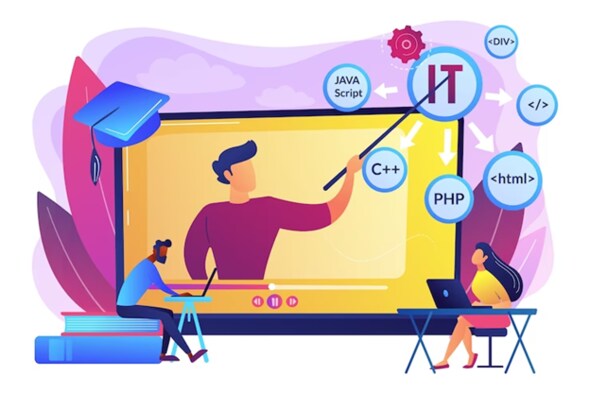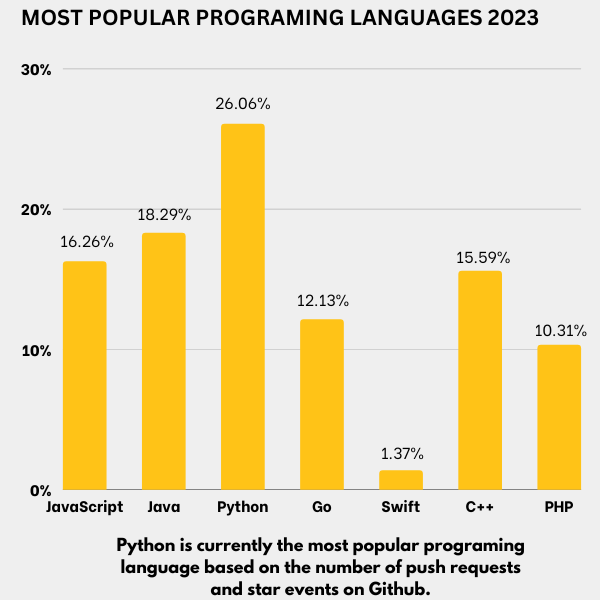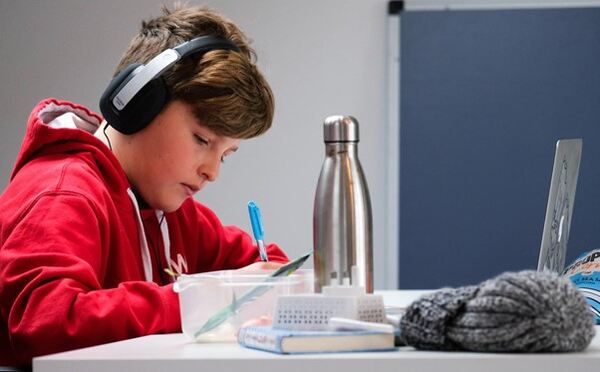Most Popular Programming Languages to Learn
The technology world is changing. And to be part of this, you must invest in learning new programming languages. The programming language has shown exponential growth, which will continue. Because of the growth of programming languages, there is no age limit for learning. You can master any new language as per the demand of the market.
These days, programming languages are in huge demand, and investing in such languages will definitely drive growth. This results in a high demand for IT jobs as well. Thus, there is a need for skilled programmers who can help build unique websites, software, and much more.
In 2023, the technology will take on a new shape and continue to expand. With the help of developers and programming languages, you can build software that can significantly change the technological world.
Today we will discuss some of the popular programming languages. So let’s begin.
Invest in the leading top 10 programming languages in 2023
1. Javascript
You may have heard about JavaScript. It is a high-level programming language that has given growth to the technology world. It is an interpreted client-side programming language commonly used to create interactive web pages and user interfaces.
JavaScript is a versatile language developed by Brendan Eich in 1995. It supports a variety of programming paradigms, such as procedural programming and object-oriented programming. It has extensive libraries and frameworks.
Let us explore some of its outstanding features, as it is one of the most promising languages for kids and adults.
- JavaScript runs on web browsers, servers, and even mobile devices.
- It has a well-organized codebase.
- JavaScript is an event-driven language.
- Java Platform has greater control of the browser.
- Top companies like Microsoft, Uber, PayPal, Google, and Walmart use Javascript as their programming language.
2. Python
Python is the best programming language. In the year 1991, Python was born by Guido van Rossum. Python is an open-source programming language with effortless integration with web services, GUI-based desktop applications, and user-friendly data structures. Python is used to develop 2D imaging and 3D animation and to create popular video games.
Therefore, learning this programming language can bring success and growth. So, let us look at its outstanding features:
- It is easy to learn and code for new beginners.
- Python has extensive libraries and frameworks that support a applications.
- Python is an interpreted language.
- Python can run on Windows, macOS, Linux, and many more.
- Top companies like Intel, Facebook, and Netflix use Python.
3. C/C++
C is the mother of all programming languages. It is powerful and is the language for games, system programming, graphics, and enterprise applications. C was developed in the 1970s by Dennis Ritchie, and later, C++ was developed by Bjarne Stroustrup in the 1980s. Both languages are compiled and can convert into machine code.
Both offer features like:
- C++ is for competitive programmers.
- C/C++ is used to write low-level systems.
- Companies like Google apps, Microsoft, Apple, and MySQL Server use this programming language.
4. PHP
PHP is a popular server-side scripting language used for web development and developed by Rasmus Lerdorf in 1994. PHP was the first server-side language that allowed for integration with HTML. PHP is suitable for dynamic web pages, and because of its increasing trend, PHP developers are in high demand.
Some of its features are:
- It is easy, quick, and straightforward to learn.
- Highly protected to control threats and attacks.
- Faster than other scripting languages.
- Websites like Wikipedia and Yahoo run on PHP.
5. Java

Java is a self-supported platform that can run on different operating systems without modification. However, Java is a popular object-oriented programming language, and in 1995, Sun Microsystems (now Oracle Corporation) founded the JAVA programming language. Java is used in web development, mobile app development, enterprise software, and education to teach programming concepts.
Some of the significant features of Java are:
- It is the most secure language.
- It is an object-oriented programming language.
- JAVA can improve productivity, performance, and security.
- Companies like Flipkart, Instagram, Amazon, and Adobe use JAVA.
6. Swift
Swift is an open-source programming language that is easy to learn and use. However, it requires fewer coding skills and works well for mobile, desktop, and server-side programming.
It offers features like:
- Swift is easy to comprehend and maintain
- Speeds development process
- Enhanced performance
- Supports dynamic libraries
- Top companies such as Swift, Apple, Instagram, Uber, and Slack use Swift
7. Go
Golang is one of the most trustworthy and efficient programming languages. Go was designed by Google in 2007 to manage the challenges of modern software development. Go is often used for web development, network programming, and cloud infrastructure.
Some of the most prominent features of Go are:
- It has a simple and easy-to-read syntax.
- It has a large and active open-source community.
- It supports automation processes.
- Companies like Google, BBC, Medium, and Uber use Go as their programming language.
8. SQL
SQL is a structured query language used to store and manage databases. SQL allows developers to create, modify, and query databases. SQL is for small-scale desktop databases to large-scale enterprise-level systems.
Here are the key features of SQL that are essential to know.
- It can manage complex queries.
- It provides various commands to manipulate the data stored.
- SQL provides tools to regulate access to a database.
- Top companies like Amazon, Google, and Facebook use SQL as their programming language.
9. Ruby
Ruby is another scripting language invented by Yukihiro Matsumoto in 1995 in Japan. Ruby is for web development, scripting, automation, data processing, and analysis. It is an open-source community and donates to libraries, frameworks, and tools.
Here are the features of Ruby.
- Ruby has a simple and elegant syntax.
- It is an object-oriented language.
- It allows for metaprogramming.
- Top companies like Airbnb, GitHub, and Shopify use Ruby as their programming language.
10. Kotlin
Kotlin is a modern, open-source programming language. It is primarily for applications ranging from mobile app development to server-side applications.
Here are some of the features of Kotlin:
- Kotlin has an elegant casting feature that allows for automatic casting.
- Kotlin has a large and active open-source community.
- Kotlin has a concise syntax that reduces the amount of boilerplate code.
- Top companies like Google, Uber, Pinterest, and AirBnb use Kotlin.

Provided by developersforhire.com
Conclusion
As technology advances, an IT professional must stay updated with the technology. Staying up-to-date with the most popular programming languages in 2023 is essential for driving growth.
All these languages mentioned above are the most promising and can provide excellent career options, so go ahead and select the best one for you.










